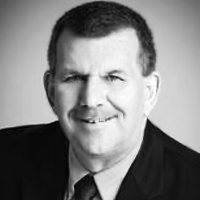Interview with Tom Powers, Ph.D., VP Audiology and Professional Relations, Siemens Hearing Instruments
Paul Dybala: Hello everybody, or "Bula" as they say in Fiji, this is Dr. Paul Dybala with Audiology Online, and today I am visiting with Dr. Thomas Powers, the Vice President of Audiology and Professional Relations at Siemens. Tom, thanks for taking time to come and visit with me today.
Tom Powers: Great, thank you, I'm happy to do it.
Dybala: If you would, give us just a little bit of your background with Siemens.
Powers: Sure. My responsibilities are focused really in three main areas regarding the customer support function here at Siemens. The areas include customer service and our audiology group, the training aspect for both customers as well as our internal staff on all the products, and also the technical support and e business portion of the company. So it's really sort of a customer-relationship management area that I oversee, including those three areas. I'm also actively involved in the VA business and contract as well, but my three main roles are as I described to you before.
Dybala: Siemens has recently released CIELO™ 2 Active. Give us an overview of what it is and what makes it different from its predecessor?
Powers: Yes, the CIELO 2 by itself is a new circuit, but it's based on the original CIELO, so we named it CIELO 2, which is really an upgrade in features in the signal processing area. What makes CIELO 2 Active different from CIELO 2 is that the instrument joins our Active product line in conjunction with CENTRA Active™. For Siemens, the Active line is the designator for our receiver-in-the-canal products. So this will really give us product number two in the Active line.
CIELO 2 incorporates a number of high-level signal processing features, including a phase-cancellation feedback system and state of the art signal processing, but what makes CIELO 2 Active unique is some of the other features we've incorporated into the Active product line. Among those are Siemens exclusive C Guard™ barrier against wax and humidity, the GORE™ clip-on microphone cover, and a nanocoated housing, all of which make up Siemens AquaProtect™ technology. This technology serves to repel water, prevent corrosion, and enhances reliability.
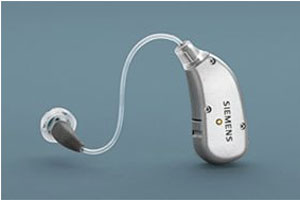
Dybala: Let's get into that a little bit. I think a lot of our readers are familiar with channels of compression and feedback reduction, etc. But this is a relatively new trend that we're seeing in hearing aids, making them more resistant to sweat and to dirt. Tell us a little about your AquaProtect technology.
Powers: One of the things that we've recognized was that we were seeing younger individuals coming into the hearing aid market. We felt there was some real concern about features in regard to their lifestyles. Now as open products and certainly receiver-in-the-canal, or for us, the Active products, take on a larger portion of the marketplace, we are being more vigilant about making these products more flexible and durable as well.
Over half the people who own hearing instruments still participate in a lot of sports and physical activities like jogging, tennis, and so forth. We needed to look at the lifestyle issues being faced, and that's what really drove us to incorporate these three AquaProtect technology features.
The first part of AquaProtect is the GORE clip-on microphone cover. CIELO 2 Active is a directional microphone instrument, and on the back of the instrument is a small clip-on cover that can be removed and replaced. On the underneath portion of the cover are two GORE membranes that protect the microphone from moisture, dirt, debris, and sweat; it really provides a level of protection for individuals so they can get out in the environment and still continue their activities. It's a way to keep the hearing instrument in great working condition, which is, of course, one of the ways we improve speech intelligibility.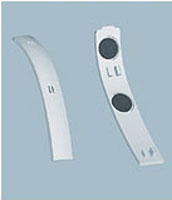
GORE clip-on microphone cover
Dybala: That "covers" the microphone, let's talk about how CIELO 2 Active protects the receiver. Tell me about the C-Guard.
Powers: The C Guard barrier is really a combination of two things: the dome that fits over the end of the receiver, and a membrane to protect the receiver. As we mentioned, this is a receiver-in-the-canal instrument, so the receiver does extend into the ear canal. We need a dome to provide a secure fit in the ear and support the receiver assembly. The domes come in a variety of sizes and diameters, depending on the size of the ear canal.
The C Guard membrane is on the outside portion of the dome that faces into the ear canal. It works much like the microphone cover to prevent humidity, dirt, and cerumen from entering into that receiver assembly. It's easily changed by the wearer and comes in a simple kit and includes the tool to remove it individually, but you would just replace the entire dome for receiver-in-the-canal products.
We recommend the domes be replaced every three to six months, or if the user notices that the membrane is broken, obviously it needs to be replaced right away. In general, that doesn't happen unless it gets poked while it's sitting on the table or next to car keys or something.
The C Guard has really been a very useful tool for wearers to prevent those wax-related repairs that so often cause their hearing instrument to break down right before an important event like a wedding or somebody's birthday, etc. So anything we can do to keep instruments in people's ears and in working condition day in and day out is what we are striving for with our hearing instruments.
Dybala: I am not sure if I heard correctly or not, or maybe I didn't hear [laughter]. Is this something that you recommend the professional change out or can the user change it out?
Powers: That's absolutely true and you heard that correctly. We didn't specifically mention it but it was designed for the user to be able to change it on their own. In the case of the Active, the C Guard is integrated into the dome, so it is replaced on a regular basis.
The C Guard also exists as an insert for our custom products. So, if you have a custom CIC, for example, the C Guard could be inserted into the receiver tubing of a custom in the ear product and provide the same type of protection.
Again, a small tool would be used for the replacement on custom products, and the wearer can do that for the most part. We designed it and tested it with our target population. However, there will be individuals with dexterity and visual issues who may need to come back to the office to have that replaced.
Dybala: Great. Well, the other part of the AquaProtect technology is nanocoating. My understanding is that Siemens was the first manufacturer to use this in hearing instruments. But, it's also my understanding that it's a little bit of a misnomer, too. Could you give us an overview of that?
Powers: Yes. It's unfortunate that when this term was coined outside the hearing aid industry, they used the word "coat" in nanocoating. It really is more of a manufacturing process that uses nanotechnology, if you will. It is kind of like bonding small particles in ways which cause them to repel moisture, oil, and dirt. It really is part of the manufacturing and mold injection process for BTE cases.
For our application in the hearing aid industry, we use it in the mold injection process to create nanocoating for the instruments. Again, it's just unfortunate that we use the word "coating" because people think that if they get wet or something happens to it that the coating will come off. It's really not a coating; it's throughout the case. Really, what it does is allow the seams to fit better, and because of that moisture does not run down the seam into the instrument.
We've also designed a lot of instruments with the seams on the sides so that the moisture doesn't drain directly down into the circuit board, as was the case in traditional BTEs where the two cases came together. It was a really nice channel for moisture to get into the instrument and into the circuit. And of course, moisture is the enemy of any electronic device including hearing aids. So, it's really a design process as well as a manufacturing process.
Nanocoating has been shown in our internal quality testing to reduce overall repairs, reduce corrosion, and help with moisture issues. It's now in all of our BTE cases for our current products.
Dybala: Well, I think that's a pretty strong testimonial there. I don't know if this is accurate or not, but the way I think of your nanocoating working is like the coating they sell on TV for your car windshield. When applied to the windshield it causes the water to bead up nicely and fly off the sides to where you almost don't even have to use your windshield wipers very much.
I think about almost the same thing also happening with the BTE case. You have that bead of sweat that, instead of getting down into the seam, it beads up and it falls off the hearing aid versus getting into the hearing aid. Is that an accurate analogy?
Powers: That's pretty much what it is. That's very similar to some of the graphics and animations we use to show how it does runs off the case. That's really what we are trying to do with this nanocoating technology is to repel moisture and oils that cause corrosion issues either in the circuitry or the battery compartments.
Dybala: Very good. I wanted to ask about another feature Siemens has implemented in this line. There's now a trend to offer an option to have a rechargeable battery, and I see that CIELO 2 Active has a rechargeable battery. Do you see customers using that a lot? I'm kind of curious about what you've seen.
Powers: Yes. We see a pretty high usage of it. I think it also relates, again, to the audience. When these very active people initially find out that every ten days or two weeks they have to change the battery, they are sort of shocked. Their mindset might be that it should be like their watch battery: they only have to change it every few years.
Dybala: Oh, sure.
Powers: In some cases that may even become a barrier, because they think it is just a tedious thing to do. We're seeing a wide acceptance of the recharge capability of the batteries. The rechargeable batteries have a life cycle of about 500 charges or so from the manufacturer, which is approximately a year-and-a-half to two years.
The hearing instruments also work on standard batteries. This way, the wearer has some flexibility with power source. If the individual is taking a quick trip, and does not want to take that charger along, the hearing instrument can work on standard cells.
On the other hand, with the charger you don't have to think about buying batteries. Some of our traveling business customers have taken the charger with them on business trips. It becomes another thing they pack in their suitcase.
The charger is also intelligent. It recognizes when standard batteries versus the rechargeable batteries are placed in the charger. There is a little red light, one for the right ear, one for the left ear, that comes on and tells the wearer there is something wrong, and that the charger can't charge the batteries in the instrument.
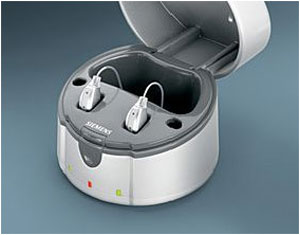
Dybala: Smart.
Powers: It really is a nice feature that provides convenience factor, I like to call "get up and go." I don't have to think, "Do I need to take a spare pack of batteries with me?"
Just place the hearing instruments in the charger and after five hours the charger shuts itself off and the batteries are ready to go all day and evening. That is pretty much an adult's all-day, all-night, wearing time. Just put the instruments back in the charger at night.
We had an interesting comment from a professional who fit a blind individual with CIELO 2 Active. The professional was specifically concerned with the wearer's ability to change batteries and get them in the right way, and so forth.
When the professional talked to the wearer about the rechargeable system and showed the wearer how to use it, the wearer was able to feel their way around the charger and find where the instruments would go in. Both the professional and the wearer were really excited that the concerns of dropping those tiny hearing aid batteries and trying to find them would be a thing of the past.
Dybala: Do you have any other stories about the ways that people have been using this AquaProtect technology to lead an active lifestyle?
Powers: Yes. We have heard from numerous professionals who are fitting these instruments. We have wearers who are active tennis players. We have one woman who is a marathoner, an active runner to say the least, and has been wearing CIELO 2 Active for a number of months, and is really happy with them.
I think it is most appealing to these people who are active, and are doing a lot of athletic-type activities. To some degree, these are people who want a lot of convenience. That is where the rechargeable feature comes in.
But again, it doesn't necessarily have to be for people who have an active lifestyle like those I just described. There are a lot of people who like the size of it, the directionality, the receiver-in-the-canal technology, and the fact that it does have all of these AquaProtect features. It's for everybody.
As you and I both know, there is still some perception out there that hearing aids are big clunky devices that are cumbersome to manipulate. These are the misconceptions we want to change by putting these types of features into today's hearing instruments.
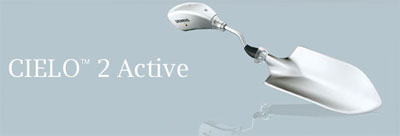
Dybala: This is tremendous. Just to give everybody an overview, this is a six-channel digital signal processing device. It's has speech and noise management, data logging, and as you mentioned before an automatic and adaptive directional microphone system. It's a nice package.
Powers: Yes. It has a great core signal processing strategy. I think those features, speech and noise management, feedback reduction, data logging, etc., are things that are really key to today's signal processors.
Dybala: Excellent. Well Tom, thank you so much for taking time to visit with me today. If anyone would like additional information on the CIELO 2 Active, you can visit www.usa.siemens.com/hearing
You can also visit the Siemens web channel here at Audiology Online. We've got current information and e learning courses on this as well at www.audiologyonline.com/channels/siemens.asp. So with that, I am going to go ahead and close the interview. Tom, thanks for your time today.
Powers: Thanks a lot, Paul. Good to talk with you.
About Siemens Hearing:
Siemens Hearing Instruments, part of Siemens Medical Solutions, is headquartered in the U.S. in Piscataway, New Jersey. The company was founded over 125 years ago and is one of the largest hearing instrument manufacturers in the world. The Company is known for bringing together innovative hearing technology with premier manufacturing to help people with hearing loss.


